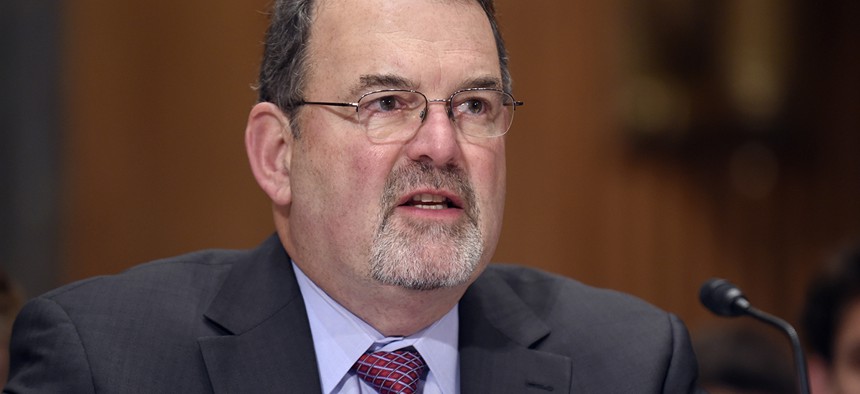FITARA: The Messy Reality of Unintended Consequences

Federal CIO Tony Scott Susan Walsh/AP
Mismanaged implementation may actually result in delays for IT delivery speed and effectiveness.
Kris van Riper is a practice leader at CEB and Audrey Mickahail is a senior executive adviser at CEB.
Many federal IT leaders have expressed optimism about the potential for the Federal Information Technology Reform Act to help increase the speed and efficiency of federal IT, helping the government catch up to modern IT management practices.
Tony Scott, the federal chief information officer, said he would consider the law a success based on faster speed of delivery, saying, "It's really speed; it's efficiency of our spend; it's projects that are on time and on budget and meeting the mission they were designed for.”
However, like many pieces of legislation, the messy reality of FITARA implementation may lead to unintended consequences. Initial scorecards on FITARA action plans show that mismanaged implementation may actually result in delays for IT delivery speed and effectiveness.
At CEB, we regularly talk to executives across the public and private sectors and the government is not alone in its quest to improve speed and efficiency in IT value delivery. Over 80 percent of business leaders say IT speed is important to launching new products or services.
However, we’re hearing a common concern: It’s becoming harder to get things done. Decision-making has become much more complex over the last five years, and IT is slowing down.
Despite increased use of agile, the average time to deliver an IT project from start to delivery has increased by over 11 percent since 2010. On average, every month of delay in a moderately or highly complex project translates to about $43,000 in costs, which can grow exponentially for larger and more complex projects.
So, despite the emphasis on speed and efficiency and the costs of delays, why are delivery times actually getting slower? Part of the problem lies in the increased number of stakeholders and concern over information risk.
The rise of collaborative tools and increase in shared decision-making has resulted in 60 percent of employees reporting they consult with 10 or more colleagues each day just to get their work done. As we’ve all experienced, emphasis on consensus often comes at the expense of speed.
At the same time, a larger number of checks and controls have been put in place to manage information risk. As a result, technology decisions more often involve risk management groups such as legal, compliance and privacy. One large agency reported it had more than 100 different IT governance bodies reviewing IT projects. In most organizations, different risk review processes are not centrally coordinated across governance bodies, which can result in significant delays.
These trends also create potential delays for federal IT organizations implementing FITARA and trying to move toward a more collaborative model for IT governance and risk management. Additionally, execution and implementation speed is likely to slow across the next 18 months as many agencies will lose their appointees and move into a period of leadership transition.
Against these headwinds, what can federal IT organizations do to avoid delays as they implement FITARA?
Promote speed across the IT leadership team: FITARA’s focus on the CIO role ignores the fact that success in IT transformation also requires a change in the definition of roles and priorities for the full IT leadership team. It is imperative to clarify and coordinate the leadership roles of the chief technology officer, chief architect and chief information security officer, who are usually career IT executives and can provide critical stability during CIO leadership transitions.
Map IT hand-offs: Progressive IT teams create explicit maps of hand-offs across their governance functions. One company we work with has created a map of all of the different actors and approvals across the solutions delivery process to clarify whom they depend on to complete their work, who depends on them, where they need to collaborate and where things get lost.
Leverage “user stories” to clarify hand-offs: One government agency we work with defined a similar map of hand-offs and then wrote “user stories” to create a common set of time-bound expectations of the delivery team’s commitments to partners and the partners’ commitment to the delivery team. This resulted in a 50 percent decrease in average project timelines.
The successful implementation of FITARA holds the promise of improving the speed and efficiency of federal IT. However, to realize these goals, it’s critical for IT leaders to proactively identify the most common sources of delays and work to mitigate them ahead of time. The agencies who are successful in doing this are the ones that stand to most quickly benefit from a more collaborative model for IT governance.
NEXT STORY: 5 Cultural Shifts Agile Brings to Agencies





